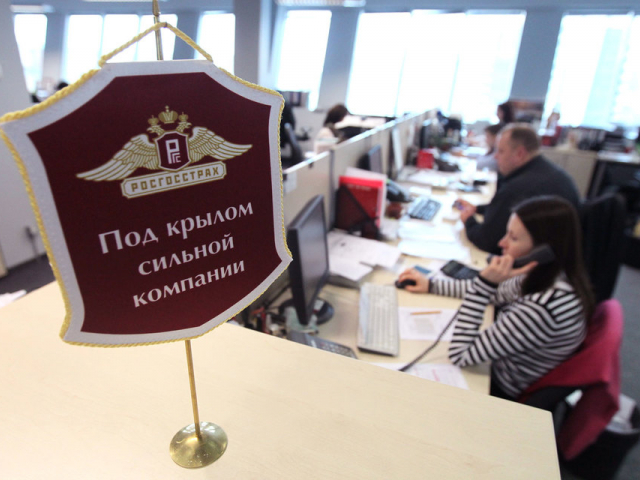
Top 7 winter drinks from around the world
Winter is the perfect time to curl up in a warm blanket and enjoy drinks that bring coziness and holiday cheer. Here are seven winter drinks that are perfect for cold days




In 2017, there was a significant consolidation in the market of non-state pension insurance: the enlargement of funds (due to an increase in the average size of a fund) is observed with a simultaneous decrease in their number. The share of the first five largest funds in the total amount of all pension savings has grown from last year's 57% to 68%, and the top ten funds already account for 92%, rather than 77% of savings. There is a phasing-out of medium-sized NSPFs from the market, some of them have experienced negative growth in 2017.

Despite the "freezing" of the funded pension component, the positive dynamics of the NSPF market in Russia for 2017 is obvious: the number of customers has grown by 15% against the previous 13%, and the pension savings in Russian non-governmental pension funds have exceeded 2.4 trillion rubles, while about the amount of 1.4 trillion rubles accounts for other assets. However, the growth rate declined (from 24% to 14.3%): the growth in the number of attracted customers can not be infinite, as the majority of citizens have already selected NSPF. The slowdown in growth rates may continue due to a decrease in refinancing rates and capitalization of income from investment.

The first place – NSPF of Sberbank
The NSPF of Sberbank has been leading for eleven consecutive quarters in terms of the book value of pension savings, which came close to 470 billion rubles in 2017. The growth of 60.4% of the insured brings the total number of insured persons closer to 7 million (6.82 million). Following the results of 2017, the yield of the fund's accumulations is 8.7%. The total value of the fund's property is estimated at 509.6 billion rubles.
Last year, the increase in savings accumulated by Sberbank NSPF amounted to more than one third (33%, or 117 billion rubles) of the total amount of pension savings, but did not become the largest. Currently, GAZFOND pension savings NSPF is competing with it on several indicators (including profitability of savings).

The second place - GAZFOND pension savings NSPF
Who, following the results of 2017, is ahead of Sberbank NSPF in terms of the absolute increase in the funds of future pensioners? Right, this is GAZFOND pension savings NSPF, which has recently taken over a number of large funds (Promagrofond, KIT Finance, and Nasledie). This increase amounted to a record 177.0%, or 300 billion rubles, that is 2.8 times higher than last year's data. The number of the insured increased by 364.5%.
As for the volume of pension savings (457.4 billion rubles), as well as by the number of insured persons (6.23 million), GAZFOND pension savings NSPF can drive out NSPF of Sberbank in the very near future. According to the yield of savings for 2017 (9.5%), there is no better than GAZFOND pension savings NSPF now.

The third place - NSPF Future
Earlier, NSPF Future took the second position in the rating, but in 2017, it was driven out by the growing GAZFOND pension savings NSPF and as of January 1, 2018, it ranks third with the savings of 283 billion rubles. The amount of pension savings of NSPF Future for 2017 is almost two times lower than that of the two previous leaders of the rating and is equal to 282.6 billion rubles. The increase in the number of insured persons is also significantly lower (11.7%), now their number is 4.43 million people.
The increase in savings for 2017 amounted to only 9.0%, while the yield declined by 2.0%. The weak dynamics of increasing returns is due to investments in assets connected to the sanitized Bank “Otkrytie". The total value of the fund's property is equal to 291.7 billion rubles.

The fourth place - NSPF LUKoil-Garant
Following the results of 2017, NSPF LUKoil-Garant demonstrated the greatest negative returns on investments (-5.3%), which is due to the difficult situation of the Otkrytie bank corporate recovery.
With a total number of the insured, equal to 3.50 million people, pension savings amount to 253.2 billion rubles. The savings grew by only 1.0%, the number of insured persons also increased slightly - by 4.8%. The fund's property is 283.8 billion rubles.

The fifth place – SAFMAR NSPF
The five best are closed by SAFMAR NSPF, which also demonstrated a weak dynamics of returns on savings for the year of 2017 (3.0%) due to investing in the assets of the sanitized bank “Otkrytie". So, following the results of 2017, the amount of funds of future pensioners of NSPF Safmar was equal to 192.3 billion rubles, the number of insured persons remained the same (2.7 million). The increase in insurance savings was small - only 3.4%.
The total value of the fund's property amounted to 204.5 billion rubles.

The sixth place - NSPF Rosgosstrakh
NSPF RGS turned out to be the second largest in terms of losses for 2017 (-2.9%). Like the rest, this is due to investments in the assets of the sanitized bank “Otkrytie".
The pension savings of NSPF RGS in 2017, amounting to 182.6 billion rubles, increased by 12.0%. The growth of insured persons was weak (11.1%), now the number of the fund's clients is 3.15 million people. The total value of the fund's property amounted to 185.0 billion rubles.

The seventh place - NPF VTB Pension Fund
In 2017, NPF VTB Pension Fund showed good results. This is the last non-state pension fund of the top ten with the volume of pension savings exceeding 100 billion rubles (143.6 billion rubles).
The number of insured persons for the reporting period increased by 15.9% and amounted to 1.54 million people. The size of the fund's insurance savings grew by 13.2%, the yield on them in 2017 was 9.0%. According to the results of 2017, the fund's property, including pension payments and other assets, is estimated at 147.4 billion rubles.

The eighth place - NSPF Doverie
NSPF Doverie, having a relatively modest amount of pension savings (99.2 billion rubles), showed a rather high increase for 2017 (by 43.7%) and small but stable returns of 3.6%. The number of insured persons of NSPF Doverie will soon exceed 2 million people, now it is 1.95 million. This is quite possible given the fact that during the reporting period, the increase in the fund's clients was 32.1%. The total property of the fund is equivalent to 101.6 billion rubles.

The ninth place - Non-State pension Fund of the Electric Power Industry
Following the results of 2017,Non-State Pension Fund of the Electric Power Industry also showed a negative dynamics of profitability (-1.7%), while part of the insured left this fund (-1.6%). Together with them, 0.2% of pension savings left. Now the number of the fund's clients is just over 1 million people (1.06 million), and the amount of insurance payments to future pensioners is equal to 92.6 billion rubles. The fund's property is estimated at 139.6 billion rubles.

The tenth place - Non-state pension fund Soglasie-OPS, JSC
Joint stock company “Non-state pension fund Soglasie-OPS” closes the top 10 largest Russian NSPFs with the pension savings of 77.1 billion rubles and the number of insured persons amounting to 1.14 million people. The growth of savings in 2017 was 62.6%, and that of insured persons - 13.6%. Despite its rather modest size (the fund's property is estimated at 77.9 billion rubles), the yield of savings for the year of 2017 turned out to be rather significant (8.3%).

Winter is the perfect time to curl up in a warm blanket and enjoy drinks that bring coziness and holiday cheer. Here are seven winter drinks that are perfect for cold days

Despite the widespread belief that ultra-wealthy individuals are leaving big cities in search of privacy, most still prefer to live in bustling metropolises, according to the latest billionaire census conducted by Altrata. Let's explore which cities today have the largest concentration of people with a fortune exceeding $1 billion

The European Union currently includes 27 member states, but the interest in joining continues to grow, with an increasing number of countries aspiring to become part of the bloc. This article highlights the countries advancing toward European integration and examines where they stand on this path